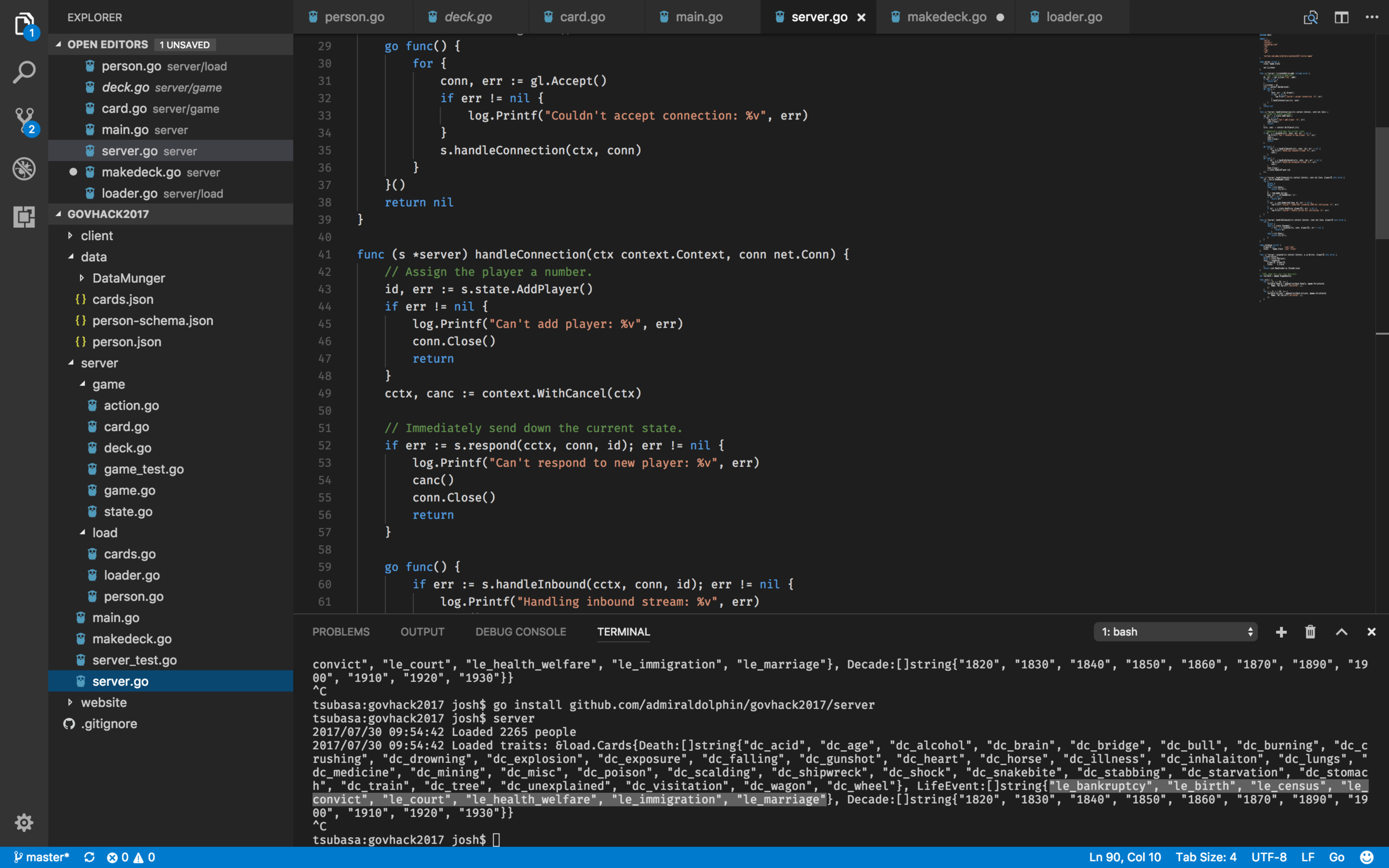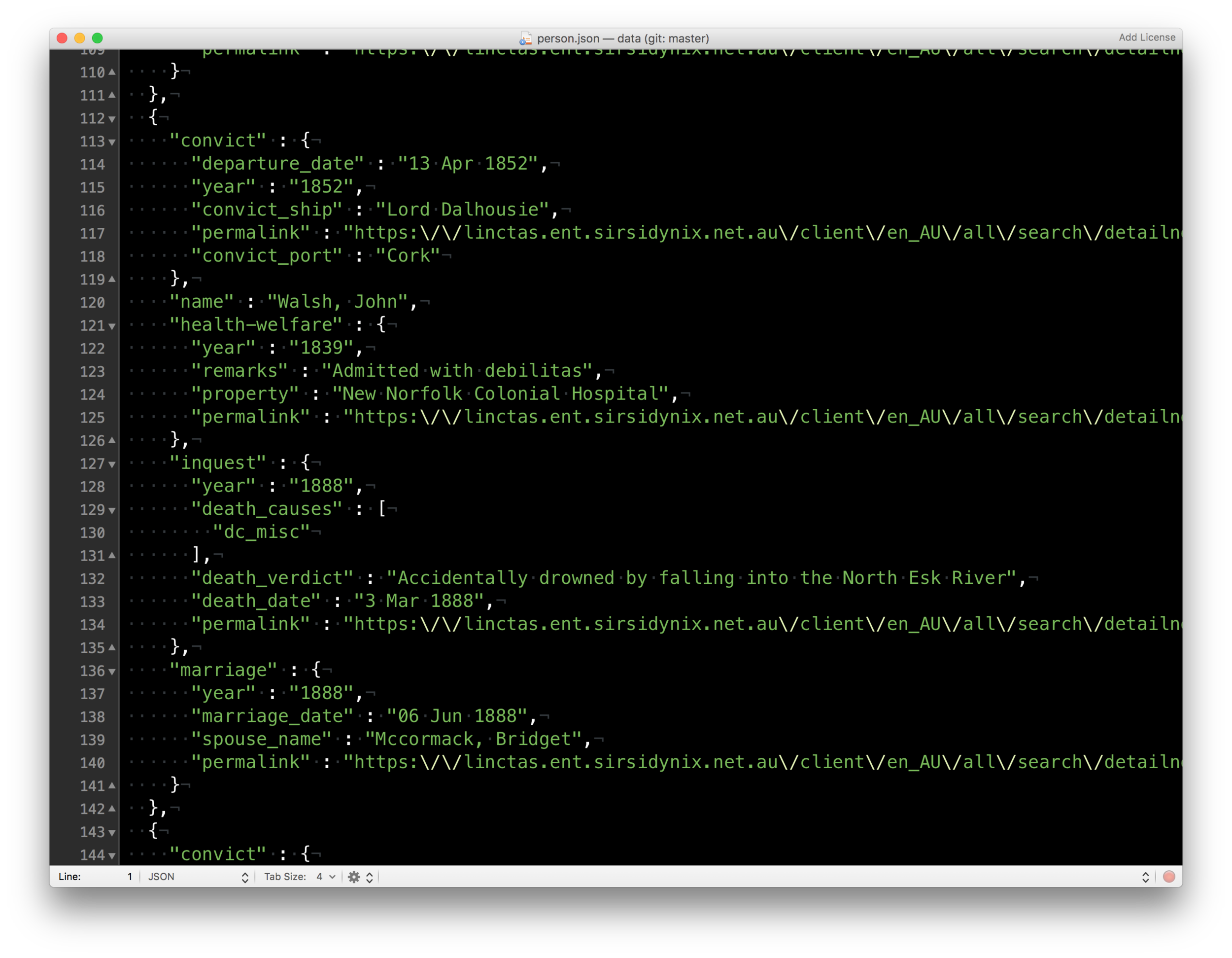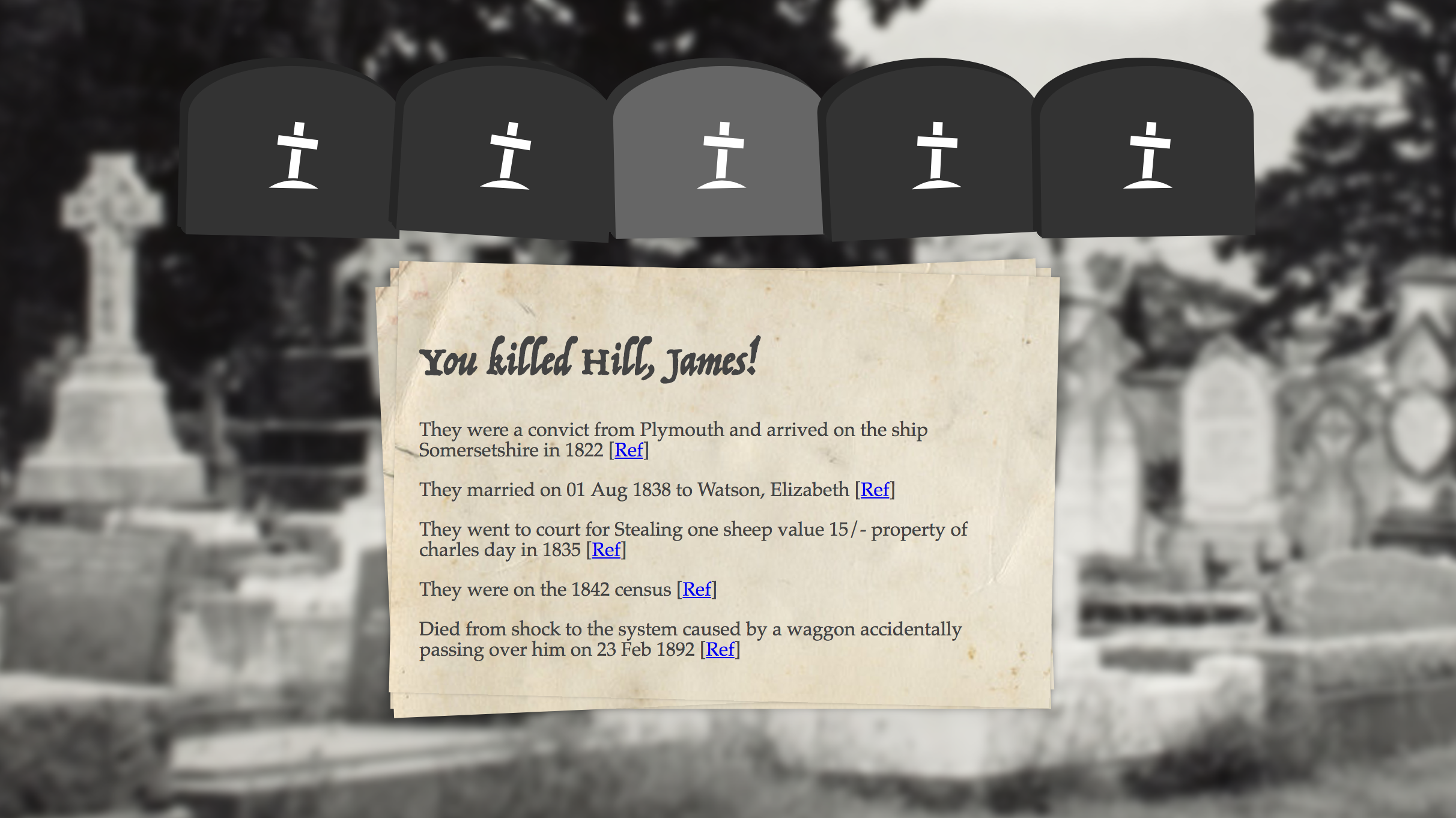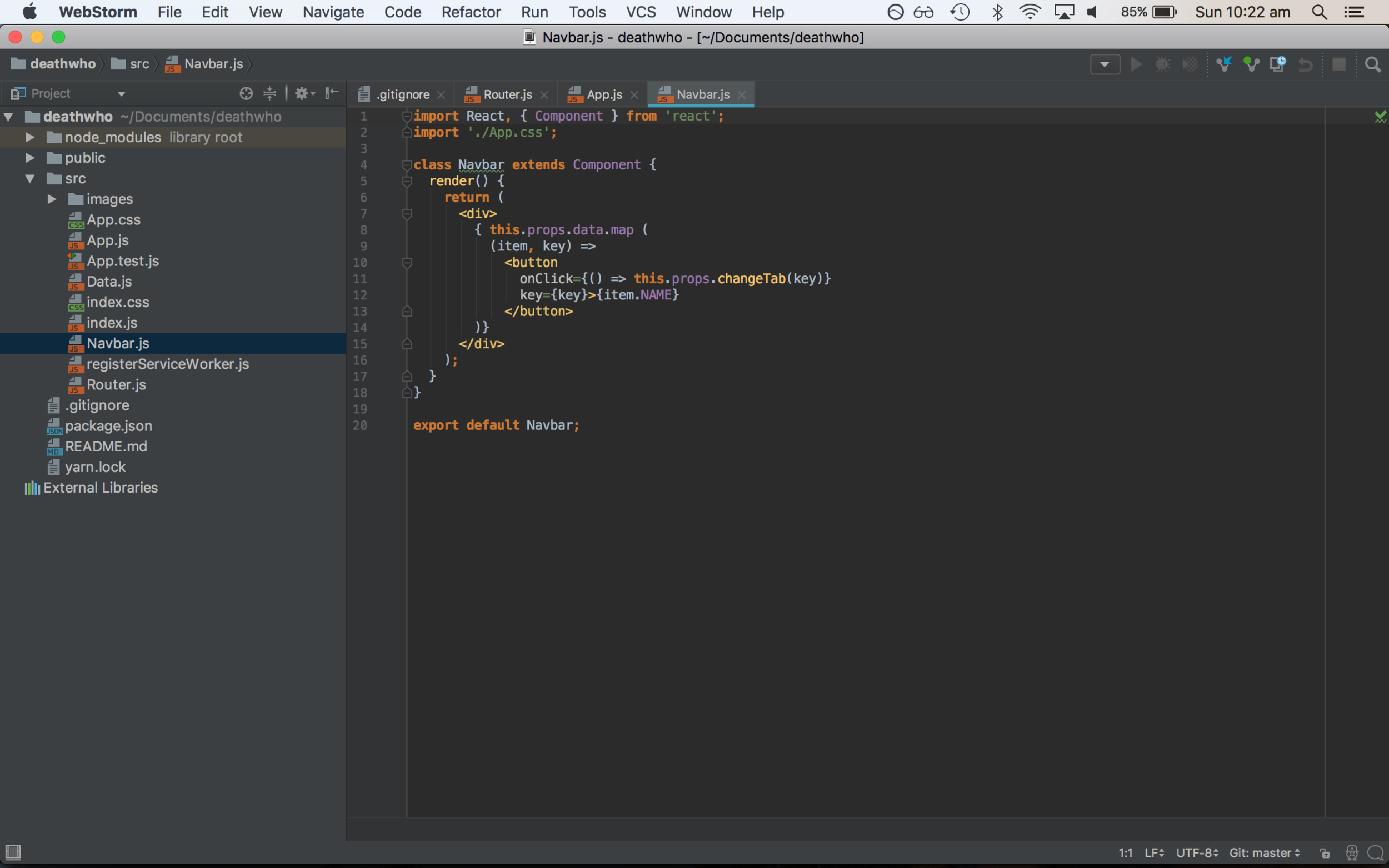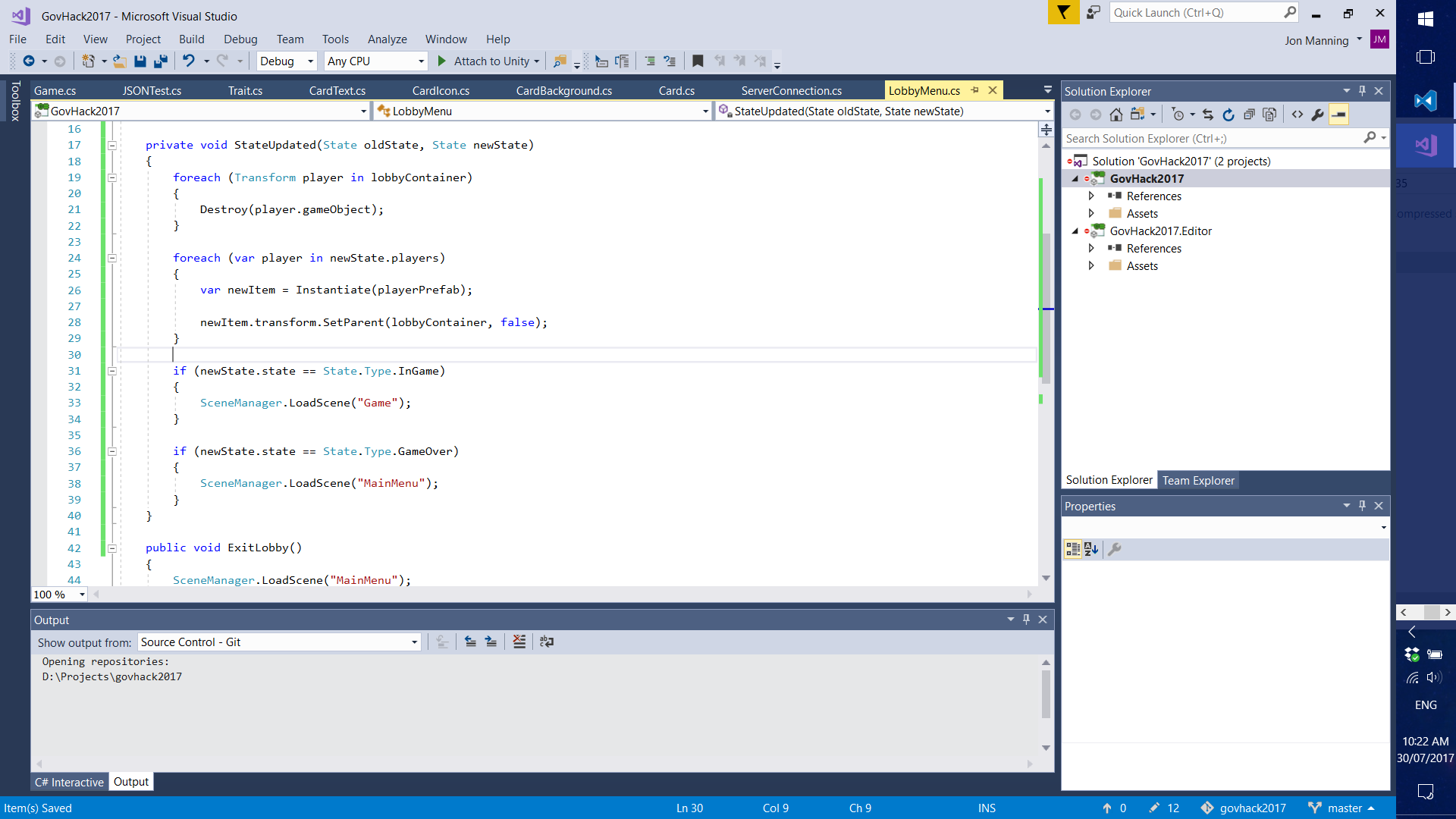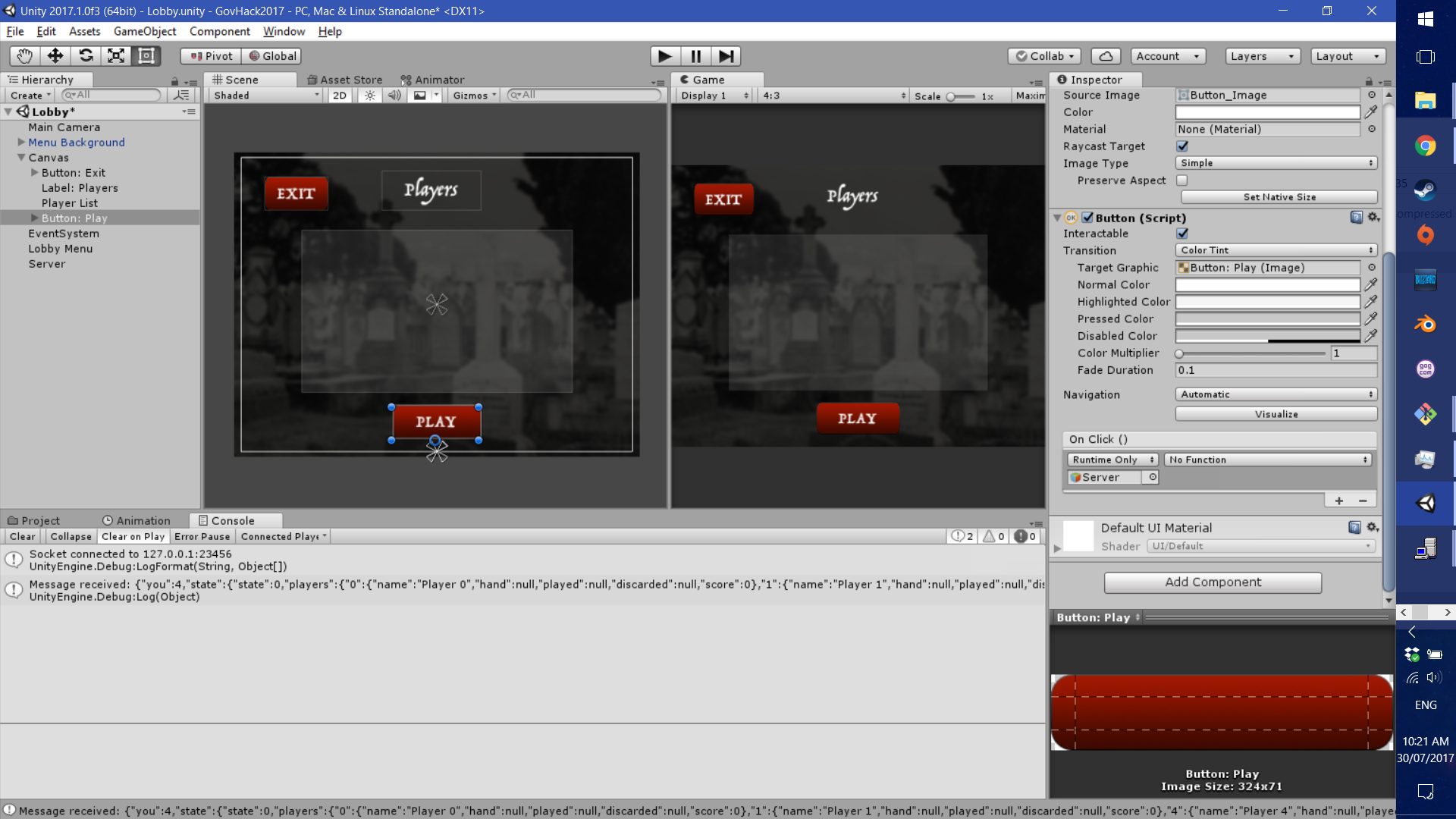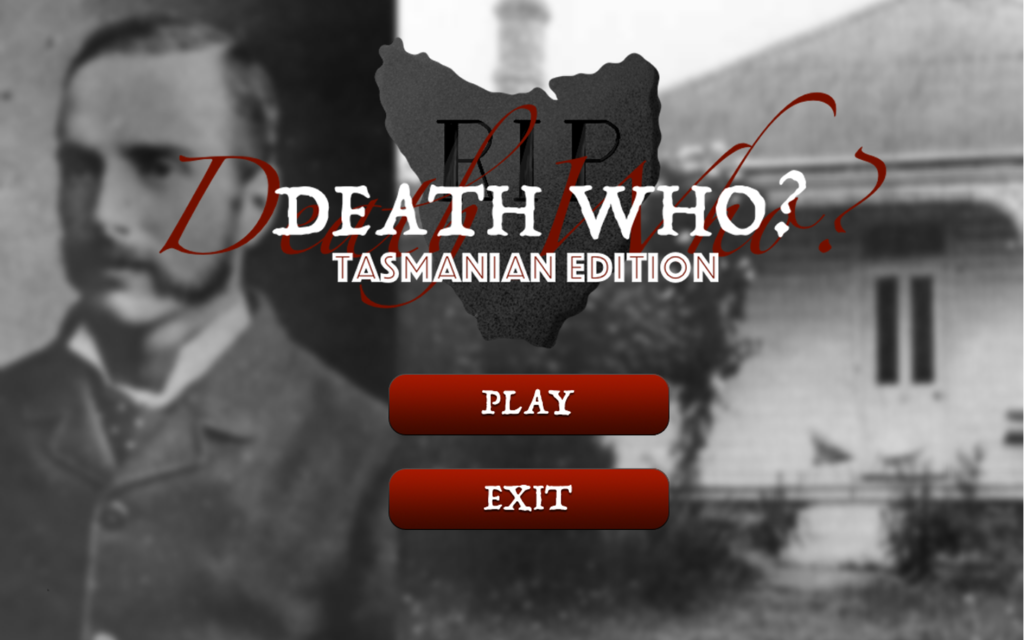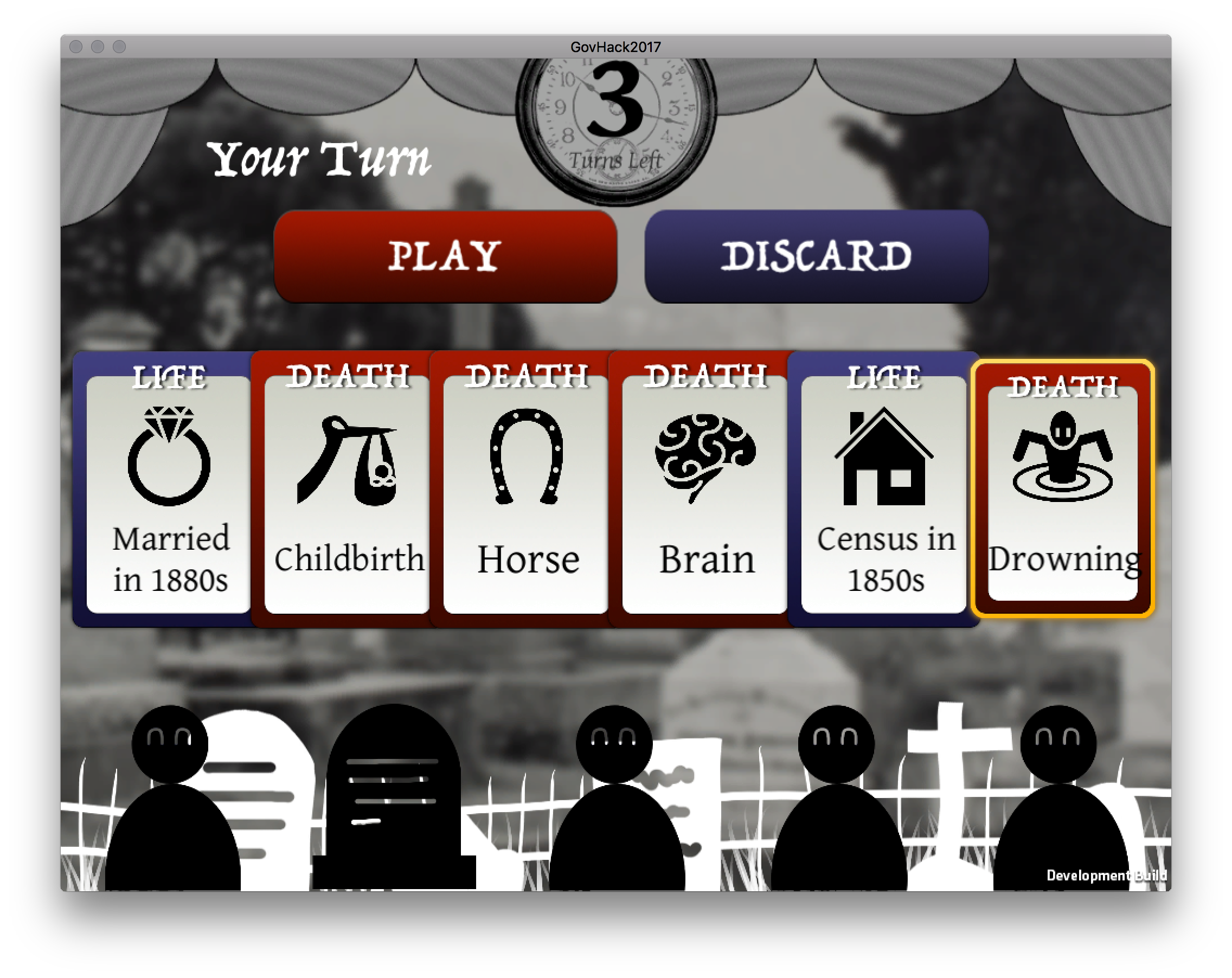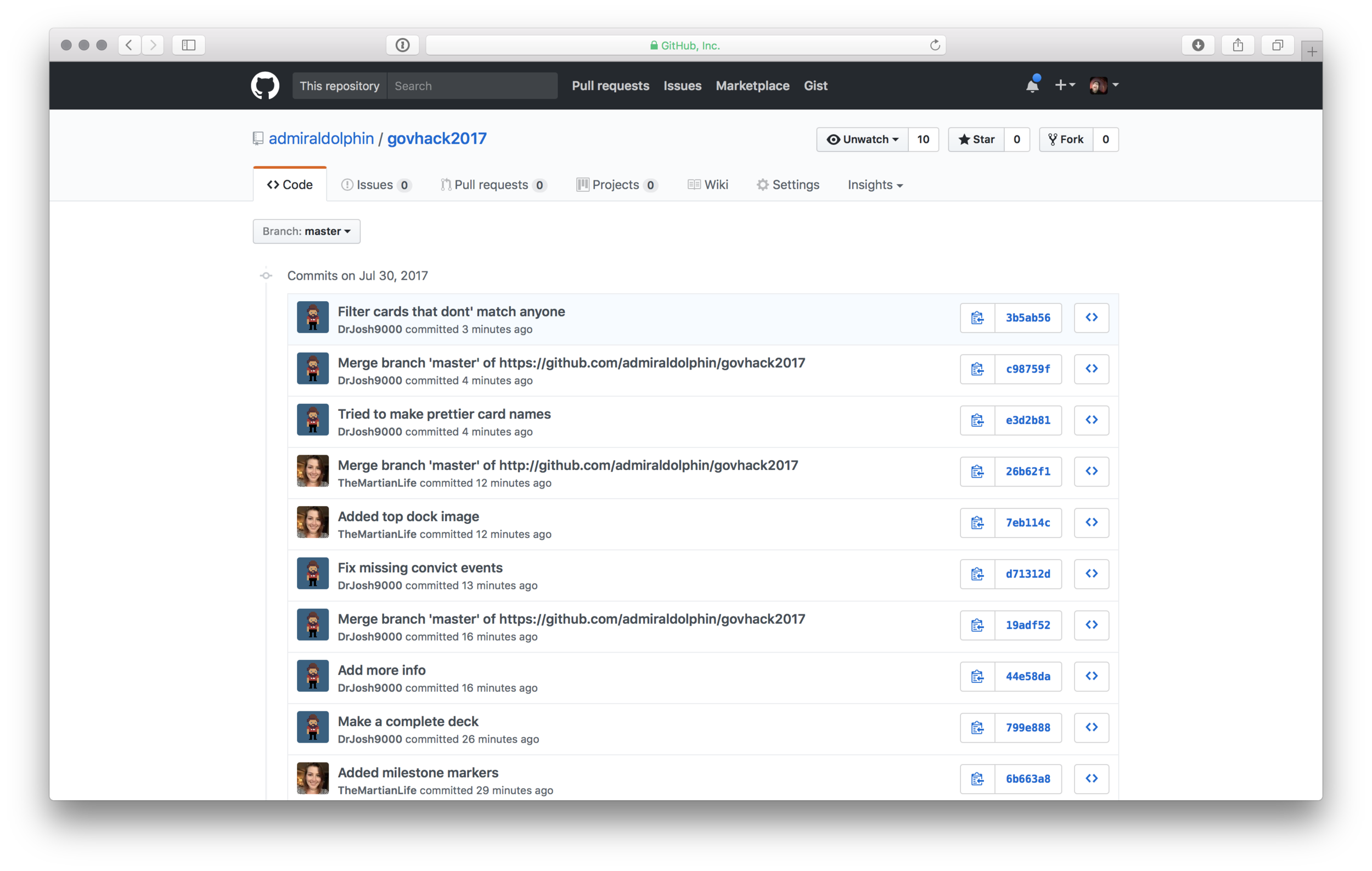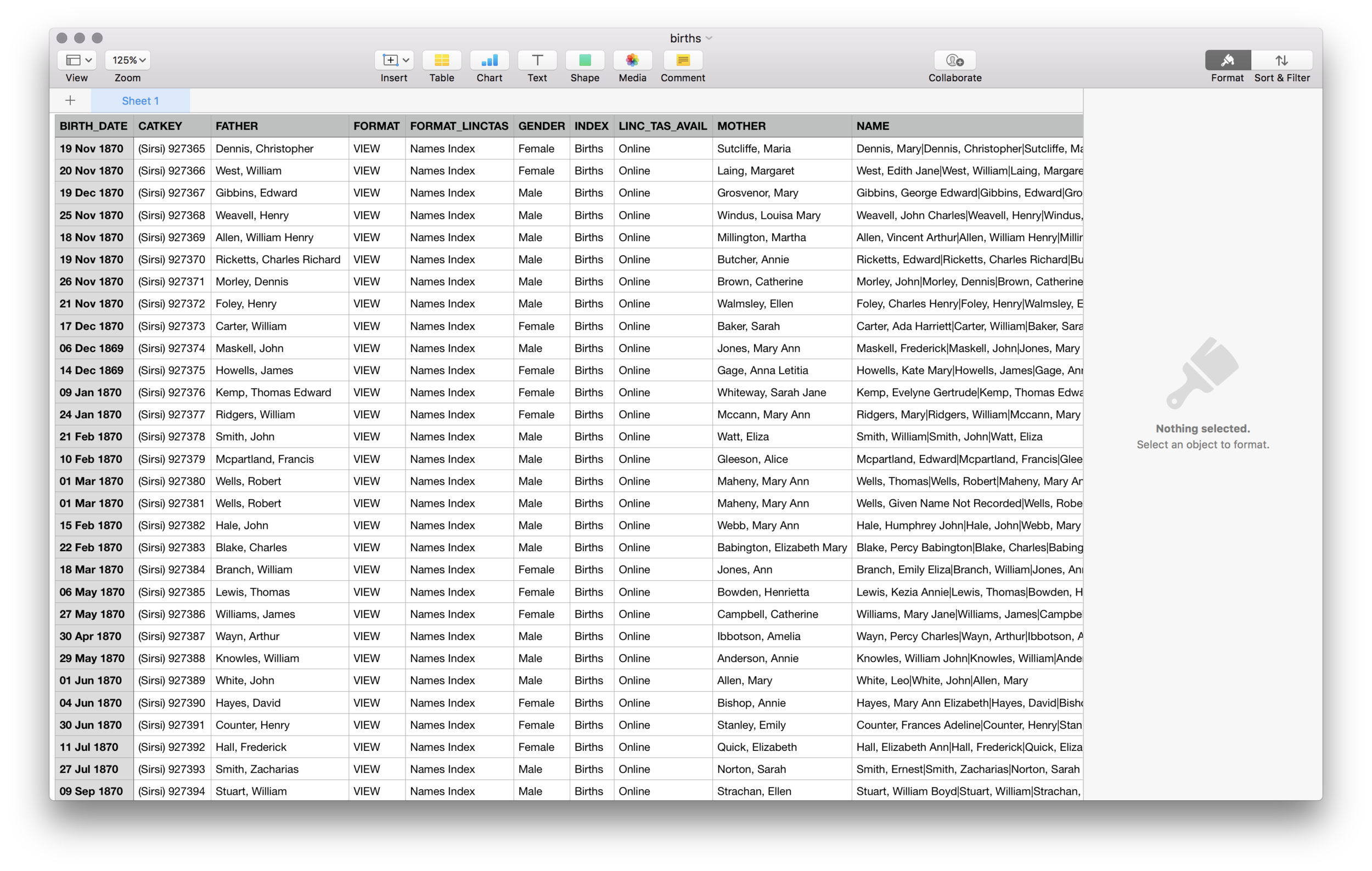Built in Hobart, Tasmania at GovHack 2017
Death Who? is a multiplayer card game where players work both with and against each other to complete milestones from colonial citizens’ lives, aiming ultimately to bring about the end of them, in a game that creates a fun and lightly-competitive way to learn about ways of life in early Tasmania.
To play, each player begins with a small assortment of people, who actually lived here sometime in the early 18-1900s, and a hand of cards from the deck. Each turn a player will play a card to cause either a life event or type of death, affecting both their citizens and those of their opponents. To earn the most points a player must complete each of their citizens’ required life events before they are killed. A premature death will leave their story incomplete and means less points for that citizen, while a citizen still alive at the end of the 10 rounds earns none.
Life events range from the cheerful births, migrations and marriages, to incarceration and transportation for citizens who were more criminally inclined. Causes of death, however, favour the strange, with reports ranging from “visitation from god” and “crushed by tree” to the strangely common “death by misadventure”, highlighting the true dangers of our homeland just a century ago.
You can download and play our game for macOS (right click on the app and click open to bypass GateKeeper) and for Windows. Please note the game requires an internet-based server, which we cannot guarantee will always remain available. We recommend running in Window mode at 1024x768. The server only supports one game at a time, so if people are playing the game wait a little while and try again.
What data did we use?
- LINC Tasmania Tasmanian Inquests (1828-1930)
- LINC Tasmania Court (1830-1845)
- LINC Tasmania Bankruptcy (1821-1928)
- LINC Tasmania Tasmanian Marriages (1803-1899)
- LINC Tasmania Immigration (1827-1940)
- LINC Tasmania Tasmanian Health & Welfare Records (1829-1873)
- LINC Tasmania Tasmanian Convicts (1803-1893)
- LINC Tasmania Tasmanian Census (1837-1857)
- LINC Tasmania Tasmanian Births (1803-1933)
Video
Like Our Project? Check it out on the HackerSpace!
Why is this project special?
Our project is special for a range of reasons, chiefly:
An entire multiplayer game and assets created over the weekend!
System could theoretically support up to 9,223,372,036,854,775,806 (~9.2 quintillion) simultaneous players in one game, given sufficient or duplicate citizen records
Created a pool of over 2,265 citizen profiles that serve information to the player that was brought together from 9 previously unrelated historical databases
Made using over 20+ tools and programming languages
Technical Overview
Backend
The Death Who? server is written in Go, an open source programming language that makes it easy to build simple, reliable, and efficient software. Go was orginally created by Google, and in production use today by Google, NetFlix, CloudFlare, DropBox, and other firms. Go is designed to be easy-to-learn and Go programs are highly readable, yet Go is powerful and compiles programs quickly.
The Death Who Server takes advantage of Go concurrency features, running multiple goroutines per player, coordinating state via channels. It uses the Go standard library including the network library, the HTTP server, JSON parsing and encoding routines, and the standard random number generator.
At startup, the server reads through all the configured datasets, and starts serving both TCP connections for the game clients, and HTTP requests for supplying the end-game website and for debugging. TCP connections coordinate by sending and receiving JSON messages. When the HTTP server is asked for “/status” it provides the game state in JSON format.
The server is available in the server folder of our GitHub repository.
Frontend/Gameplay
The Death Who? frontend is a game, made with Unity. Code for the game is written in C#, and compiled with the open-source Mono compiler.
Each player takes turns over 10 rounds to complete life and death milestones of the 5 colonial citizens assigned to them.
Starting from the first player, each person will play or discard one card (from their hand of 6) each turn. If they choose to play a life event card, any living citizens who had events matching this will have this objective achieved. A death event card, however, will kill any citizen in the game who died this way, including any belonging to the person who played the card.
This means that while playing cards that represent common causes of death may seem like a good idea to kill more of the opponents’ citizens, players must be careful not to prematurely kill any of their own. However, they must also keep in mind that a citizen’s most important event must occur -- their death, otherwise their other events are worthless.
At the end of ten rounds, a player’s score is tallied from the milestones of their citizens as follows: a citizen who is still alive (not achieved death milestone/event) is worth zero points, regardless of other milestones completed, while a dead citizen is worth points for their death plus each life milestone that was reached before their death
Research
"Those who cannot remember the past are condemned to repeat it." - George Santayana
Death Who (Colonial Edition) is based around concept of exploring history through storytelling, using the medium of a race game to provide the information in a form that is less taxing than the raw data.
Despite their appearance, games are known as an ideal medium for both telling stories and for learning new information. Their very nature is designed around transferring information in an entertaining way.
Games have been shown to provide means of creating and breaking habits, reducing stress levels, and to get people to engage in new topics. The history of people in Australia is long and varied, and we are discovering new information about the history of the country every day, despite this many people are not studying or understanding general history, let alone the history of Australia.
The reasons for this is complex and varied but some of this is due to the nature of history being tied heavily into its artefacts of learning; books, and imagery. While these are both essential they also create a barrier that is hard for people to overcome, there is very little engaging about a book when compared to a TV show or game and while people are reading more than ever, books are becoming less of a part of people's everyday entertainment.
We felt that this is a perfect opportunity for games to fill in the gap, by tying the existing historical data about Australia into a game we created a way to engage with the data in a form that has a low barrier to entry and will provide a better connection to the data than a book ever could.
Due to the time limits, and excellent abundancy of information, we decided to focus on the data sets revolving around early European settlement of Tasmania as an example of the different forms of information Death Who can make available.
The game itself takes the form of a race game, where multiple players are competing against one another and the clock to complete the lives of several early European settlers. Each player has a hand of cards that represent major life events, and their goal is to have as many of their people's life events run to completion before the clock ends or their people die.
Using the Mechanics-Dynamics-Aesethics design framework to guide decisions each element of the game mechanics was crafted to both reinforce the storytelling aspects and to be a direct link back to the people who you are currently playing the game as. All people and events come directly from the historical data, the people who's lives you live out were real people who had these events happen to them.
Storytelling was chosen as the primary aesthetic of the game due to its excellent ability to both improve cognition in the relevant area but also due to its ability to make us feel more empathic with the people and events in the story.
The secondary aesthetics of competition and entertainment give people a motivation, empathy and understanding are powerful but takes time, by having additional more traditional game aesthetics we give people a softer entry into the storytelling.
All of this means not only do we learn more about the events of early European Tasmania but we also gain an empathic understanding of the people who lived in these times.
By playing the game you learn, for example, that more people died by drowning than snakes, but you also gain a connection to these people's lives. Using games and similar tools like Death Who we are ensuring that we will not be those who are condemned to repeat history.
Awards
- Best Data Visualisation — Despite not being a traditional visualisation project, our project takes the massive amount of information in the historical archives and makes it accessible. Similar to a chart making blobs of data more clear, we make the data in the archives relatable by tying them into the stories and people from history. This way we can exploit people's natural empathic tendencies to show the data in a form rarely done, as a person - not just a line in table.
- Best Project by a Student Team — Our project includes a fully-functional cross-device multiplayer game and assets, developed from the ground up over one weekend, by a team of 6 current students (one law student, one biology student and three computing students from the University of Tasmania, along with one student of Coder Academy, some of which are previous graduates in other fields) and 2 graduates.
- Best Use of Tasmanian Heritage Data — Our project was made with the use and linking of 9 different datasets to create profiles and timelines of individual settlers from the early 18 to 1900s. Given these disparate sources, we identified a crossover of over 4000 citizens who appeared in more than one set, around 2200 of which include both arrival or birth in Tasmania and at least one recorded life event in multiple sets to link to their death records. These profiles were then used in a game setting that teaches the players about the lives and milestones of people living in Tasmania at this time, in an attempt to both educate about the contrast to current Tasmanian living conditions and to make connections to these past citizens as the unique individuals they were.
- Best Use of Local Tasmanian Council Data — Our project was created entirely with the use and cross-referencing of data from 9 datasets in the LINC Tasmania database, forming the entire narrative content for an educational game platform to convey this information in a fun and creative way. Given these disparate sources, we identified a crossover of over 4000 citizens who appeared in more than one set, around 2200 of which include both arrival or birth in Tasmania and at least one recorded life event in multiple sets to link to their death records.
- Design Excellence — Our project uses the proven Mechanics-Dynamics-Aesthetics framework to guide its design as well as borrowing design elements from over 4000 years of board games to help shape it. This was implemented by three human-computer-interaction academics resulting in a game that uses very common skeuomorphic elements and mechanics, such as playing cards, allowing for immediate understanding of the basic mechanics. The use of player controlled storytelling reinforces the link back to the historical data through the breakdown at the end tying your actions back to the real people.
- Digital Learning Hack — Our project is a game platform through which players of all ages can have a fun and lightly-competitive way to engage with an enormous amount of personal data, that is otherwise quite dry and/or morbid and lacking in context, from 9 different historical datasets that we have linked together to paint a picture of living conditions and dangers in Tamania for colonial settlers.
- Innovation Hack — Our project is a game platform that was created from the ground-up, from early brainstorming all the way to a fully-functional product, in the span of just one weekend. To do this we were forced to find creative solutions to a number of problems that resulted in a project that includes extensive historical data made by linking content from 9 different data sources, generated assets, and almost infinite potential for expansion of both content and player numbers.
- Most Commercial Potential — Our project is directly commercial in numerous forms, the market for games is massive and our game is directly translatable to desktop, web, mobile, and even physical board game form. Our use of web and Unity platforms means porting to different environments will take a minimal amount of time.
- Most Tasmanian Benefit — One of Tasmania's greatest assets is its long history of settlement and the fantastic amount of data supporting this, but it is locked away behind its cumbersome interface and because of this relatively unexplored. By making this data more accessible, we give Tasmanians a chance to look back on the past as well as the connections they would need to then dive into the raw data if they are curious.
Tools/Languages Used
- Python
Bash Shell
TextMate
Final Cut Pro
Trello
Go
JSON
Logic Pro
Import.io
Xcode 8
Mono/MonoDevelop
React
Angular
Microsoft Visual Studio Code
- Unity
Procreate for iPad
Adobe Photoshop
Apple Numbers
Google Sheets
Google Docs
Microsoft Excel
HexFiend
BBEdit
Swift
C#
Mou.app
Pixelmator
Microsoft Visual Studio Community Edition
Process
After settling on our concept, we spent most of the first evening building paper prototypes and sketching wireframes for the game concept. After we settled on a concept we were happy with, we split up the team into various departments and started implementation. Our sub-teams worked on:
prototyping and concepting
art and design
coding and engineering
documentation and video production
playtesting and gameplay
data source identification and integration
Resources
GitHub Repository – http://www.github.com/admiraldolphin/govhack2017
Team Video – https://youtu.be/z6ZsU8lxDn0
Next Steps
Polish the gameplay, improving the flow and start-up process of the game.
Incorporate even more data sources.
Improve networking!
Team
Mr Sebastian Cook – Data – stcook.gh AT tsuite.net
Dr Paris Buttfield-Addison – Mostly Unwell – paddison AT utas.edu.au
Dr Hannah Thompson – Frontend – thompson.h AT gmail.com
Dr Josh Deprez – Backend – josh.deprez AT gmail.com
Dr Tim Nugent – Data – tnugent AT utas.edu.au
Dr Jon Manning – Frontend – jam6 AT utas.edu.au
Ms Marina "Mars" Geldard – Game Design/Art – mail AT themartianlife.com
Mr Shea Bunge – Frontend – bungeshea AT gmail.com
Software and Asset License
Copyright (c) 2017, The Team Members. All rights reserved.
Redistribution and use in source and binary forms, with or without modification, are permitted provided that the following conditions are met:
- Redistributions of source code must retain the above copyright notice, this list of conditions and the following disclaimer.
- Redistributions in binary form must reproduce the above copyright notice, this list of conditions and the following disclaimer in the documentation and/or other materials provided with the distribution.
THIS SOFTWARE IS PROVIDED BY THE COPYRIGHT HOLDERS AND CONTRIBUTORS "AS IS" AND ANY EXPRESS OR IMPLIED WARRANTIES, INCLUDING, BUT NOT LIMITED TO, THE IMPLIED WARRANTIES OF MERCHANTABILITY AND FITNESS FOR A PARTICULAR PURPOSE ARE DISCLAIMED. IN NO EVENT SHALL THE COPYRIGHT HOLDER OR CONTRIBUTORS BE LIABLE FOR ANY DIRECT, INDIRECT, INCIDENTAL, SPECIAL, EXEMPLARY, OR CONSEQUENTIAL DAMAGES (INCLUDING, BUT NOT LIMITED TO, PROCUREMENT OF SUBSTITUTE GOODS OR SERVICES; LOSS OF USE, DATA, OR PROFITS; OR BUSINESS INTERRUPTION) HOWEVER CAUSED AND ON ANY THEORY OF LIABILITY, WHETHER IN CONTRACT, STRICT LIABILITY, OR TORT (INCLUDING NEGLIGENCE OR OTHERWISE) ARISING IN ANY WAY OUT OF THE USE OF THIS SOFTWARE, EVEN IF ADVISED OF THE POSSIBILITY OF SUCH DAMAGE.
Contact Us
This project was built at GovHack 2017 in Hobart, Tasmania, July 28-30 2017





